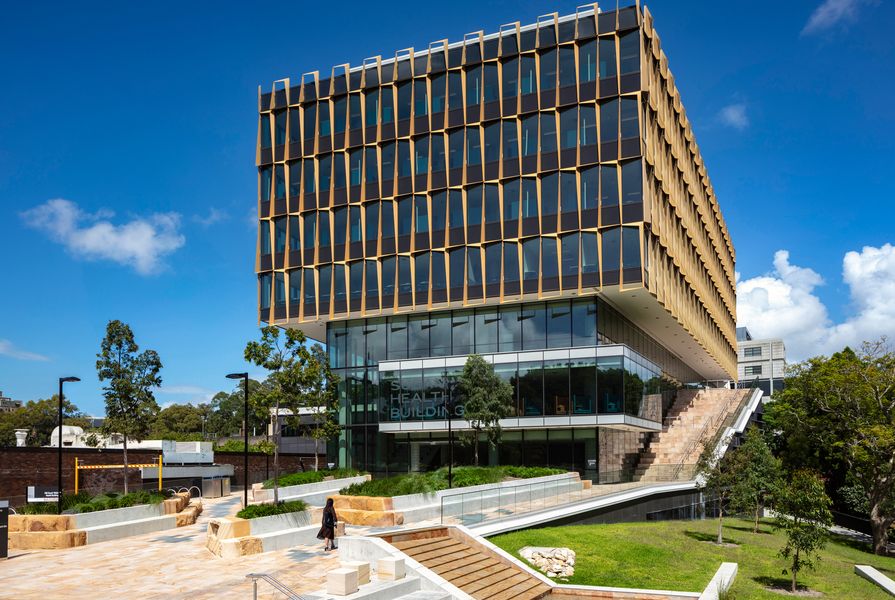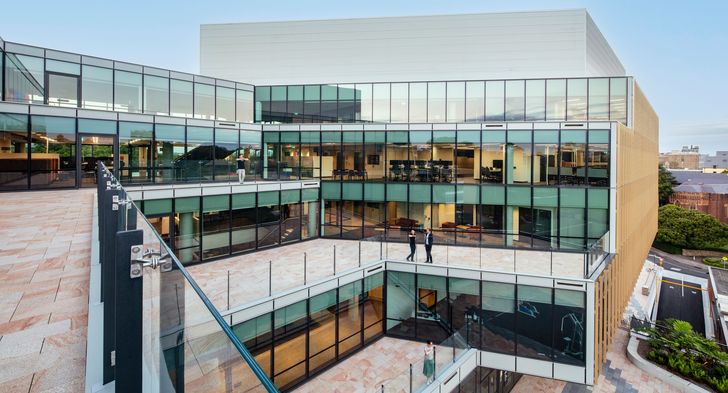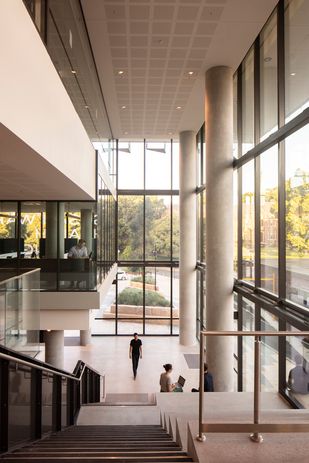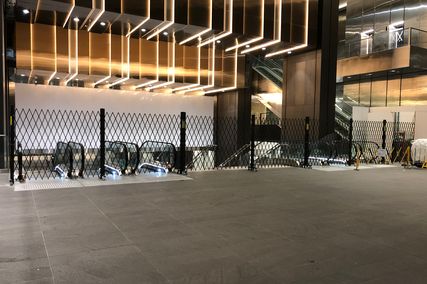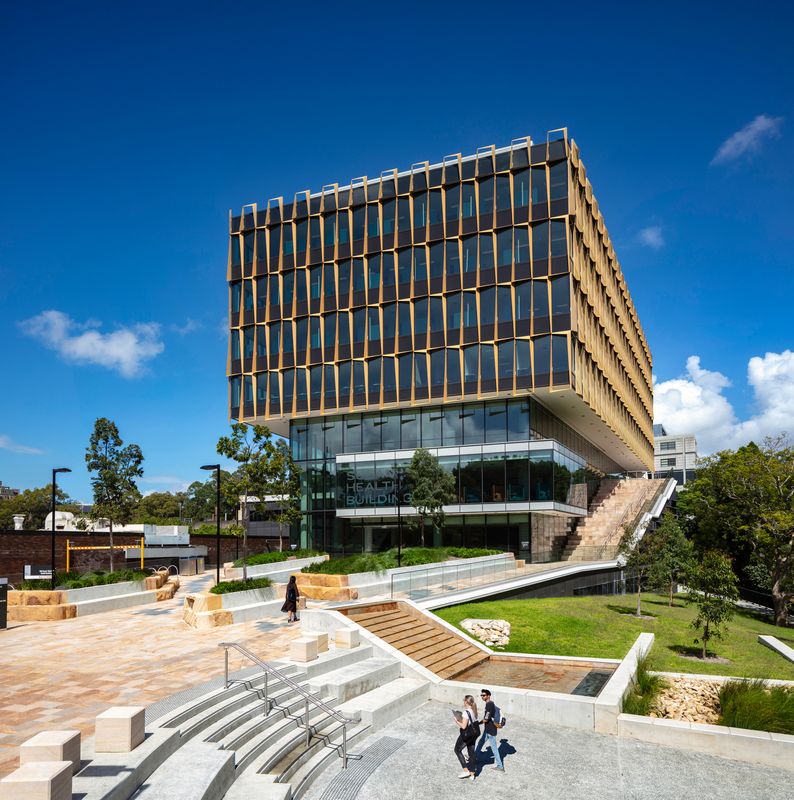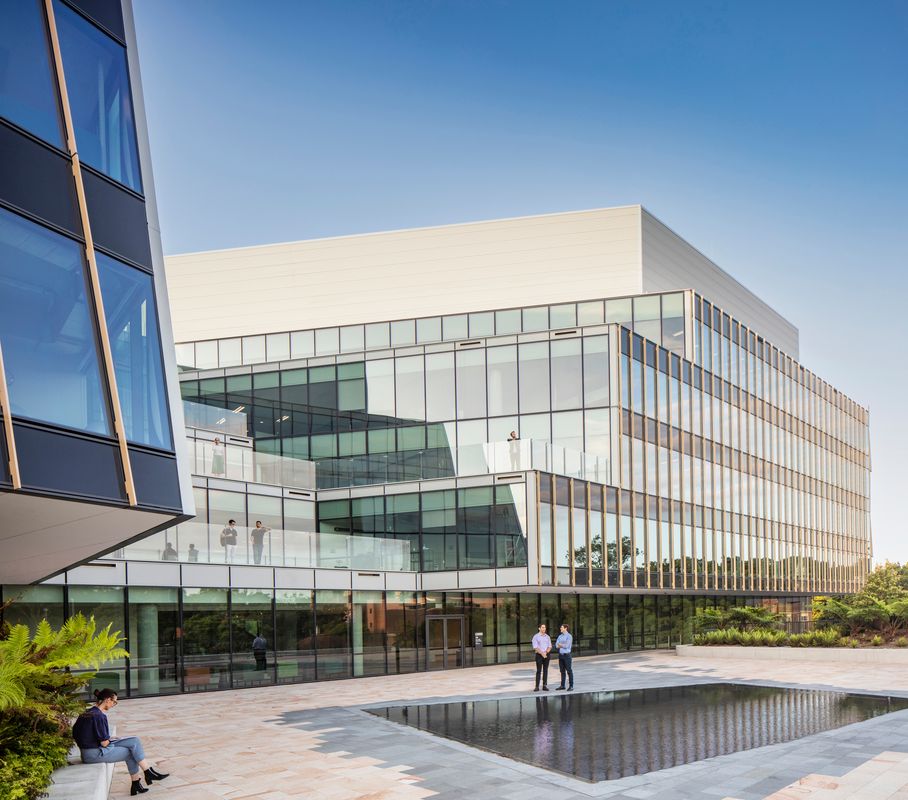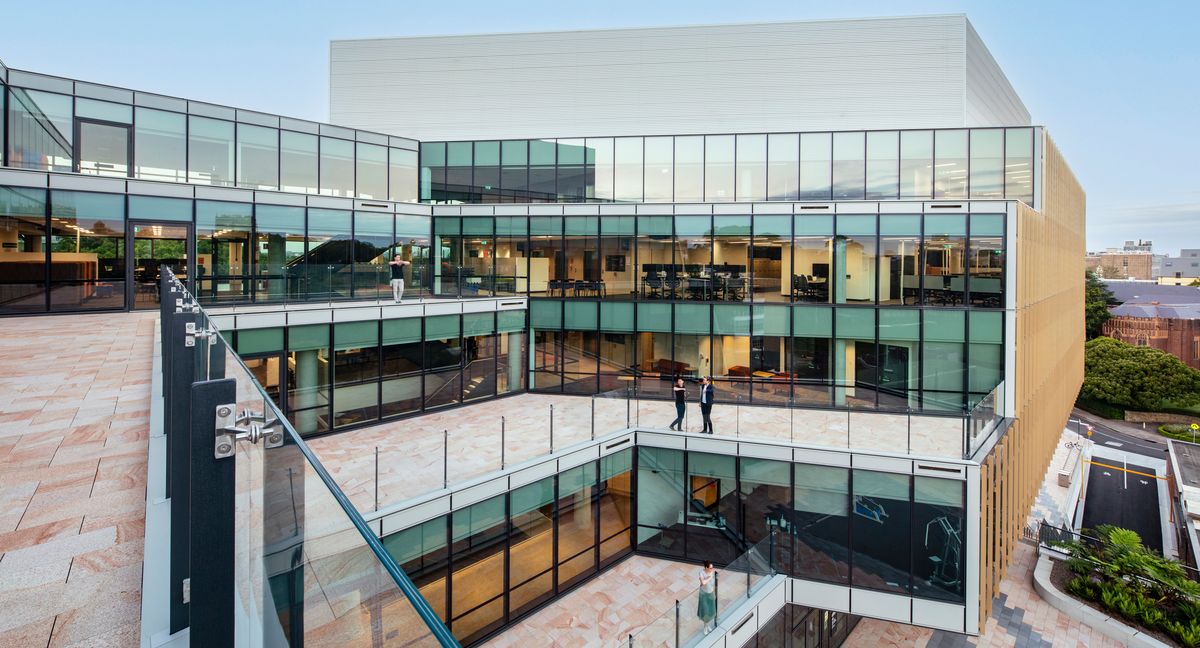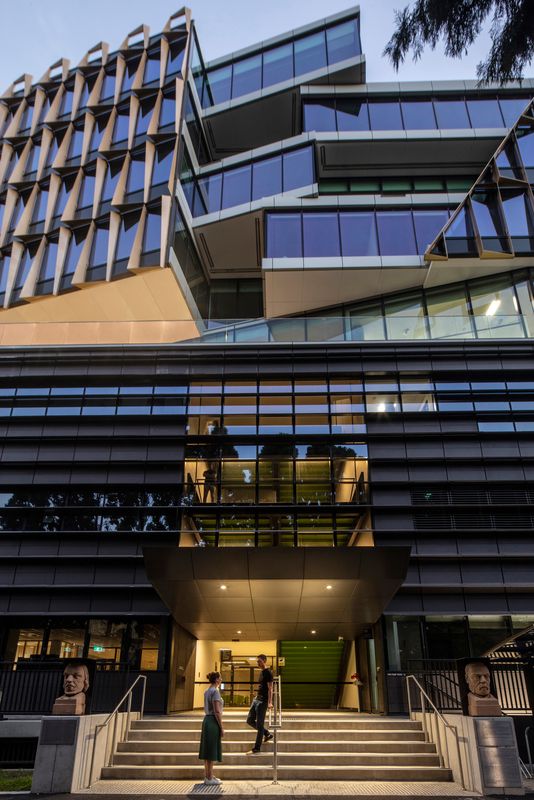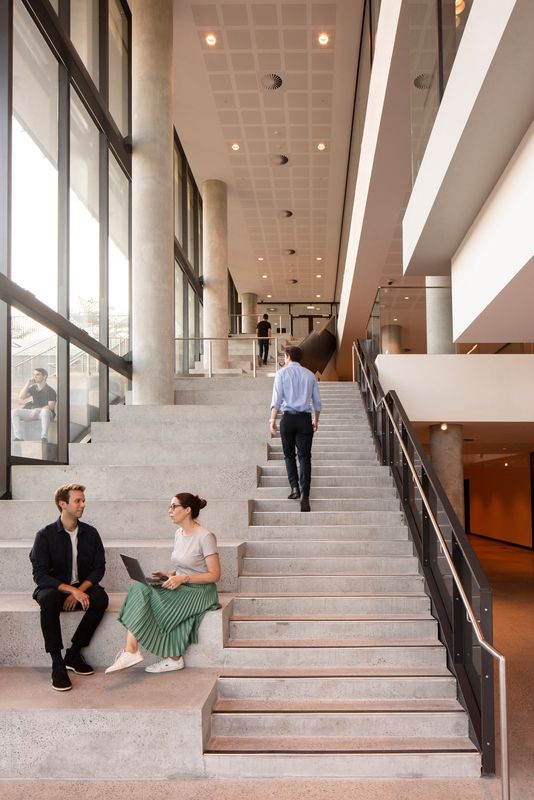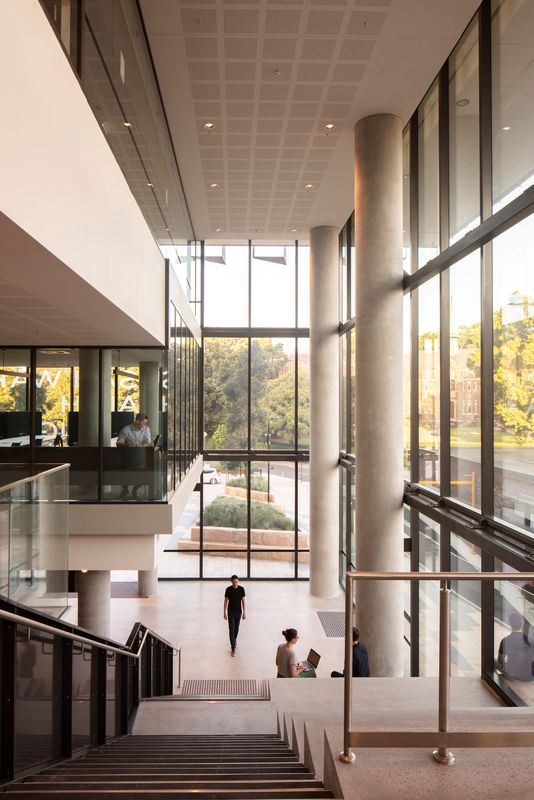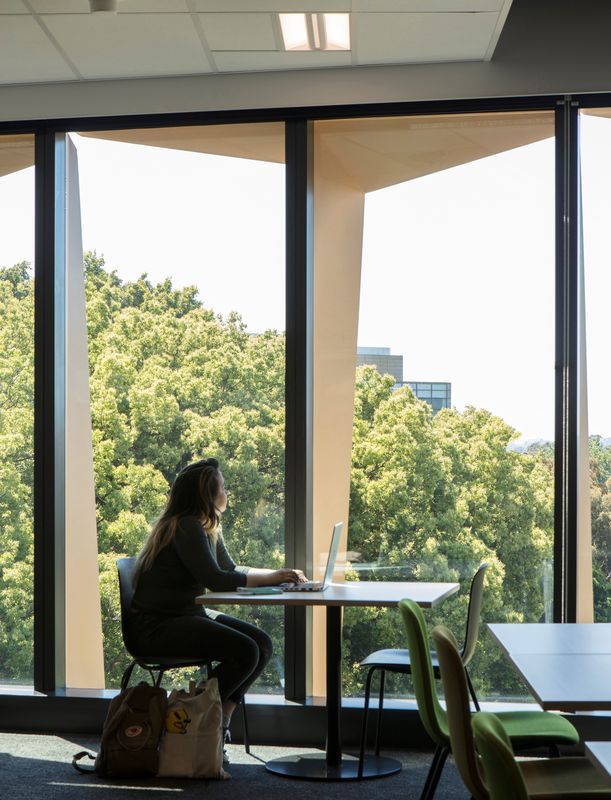A new health education and research building has opened at the University of Sydney. Designed by Billard Leece Partnership and Diller Scofidio and Renfro, the building is the first completed project in Australia for the New York practice.
The Susan Wakil Health Building brings together students from medicine, nursing and allied health and is also co-located with the Royal Alfred Hospital and Charles Perkins Centre as part of a new health sciences precinct at the Camperdown-Darlington campus.
The design team created a conceptual masterplan for the precinct that includes a number of potential future buildings, with the Susan Wakil Health Building at the northern part.
“We imagined four paths converging at a quad space in the middle, creating a raised central space that would be shared among them,” said Benjamin Gilmartin, a partner of DS+R.
Susan Wakil Health Building by Billard Leece Partnership and Diller Scofidio and Renfro.
Image: Brett Boardman
The raised landscape, with the Upper Wakil Garden at its heart, acts as a shared public space for students, staff and the members of the public accessing the clinics within the building.
The landscape also separates the building programmatically. Below this lifted ground plane are the learning and teaching spaces, while workplaces and research facilities are located above.
“An important part of the brief is creating spaces for bringing people together, largely because the building combined departments and faculties that were previously on separate campuses,” said BLP principal Raj Senanayake.
The public, common areas of the building – collectively dubbed “the cleave” – are used as “connective tissue” throughout the building, allowing access between indoors and outdoors and joining all levels to each other.
“The commons that form this vein through the building is glassy and transparent and offers much exposure visually between indoors and outdoors as well as spaces to literally step out onto balconies and terraces,” Gilmartin said.
Susan Wakil Health Building by Billard Leece Partnership and Diller Scofidio and Renfro.
Image: Brett Boardman
The building accommodates seminar rooms, clinics, workspaces, a rehabilitation gym, a 350-seat theatre and a library.
“The traditional tiered lecture theatre was seen to be a very important event space,” Senanayake continued. “We made this space more inviting by balancing the technology demands of a space like this with views and natural light, which is quite unusual for a modern lecture theatre. The library that you see as you enter the building is multi-level and is really the heart of the student commons in the building. It has lots of social spaces.”
The building’s upper and lower parts are delineated through two distinct facade treatments. The upper workspace levels are clad in a facade shading system which the architects say resembles a textile, while the lower levels are clad in horizontal ceramic panels and aluminium screens.
Susan Wakil Health Building by Billard Leece Partnership and Diller Scofidio and Renfro.
Image: Brett Boardman
The building is one of the first projects to be completed after the university introduced its Wingara Mura Indigenous design principles.
A key feature of the landscape design by Arcadia Landscape Architecture is the paving pattern that represents an interpretation of historic waterways that were central to the life of the Gadigal people of the area. The design also incorporates “cycles of healing” and reflects Gadigal approaches to healing.
The re-introduction of lost vegetation, such as native turpentine tree – will eventually create a canopy that will establish a datum line from the public areas at the Upper Wakil Garden. The canopy will further delineate the upper and lower parts of the building.
“The planting that is integrated into the surrounds are either plants that were traditionally used for weaving techniques and/or collected for food and by the local Gadigal people,” said Alex Longley, director of Arcadia Landscape Architecture.
The practice’s Indigenous landscape strategist, Kaylie Salvatori, consulted with the Indigenous artist Judy Watson on the design direction of a sculpture in the garden, juguma, which takes the form of a traditional woven vessel. It represents a typical net bag used by the Gadigal people for gathering plants
The building was made possible by a $35 million donation from the Susan and Isaac Wakil Foundation, the largest ever gift the university had received.
University of Sydney Chancellor Belinda Hutchinson said, “The opening of the Susan Wakil Health Building during this once-in-a-century global pandemic could not be more timely as it highlights the importance of an agile, innovative and resilient health workforce and the need to think differently to meet the health challenges of our time.”

